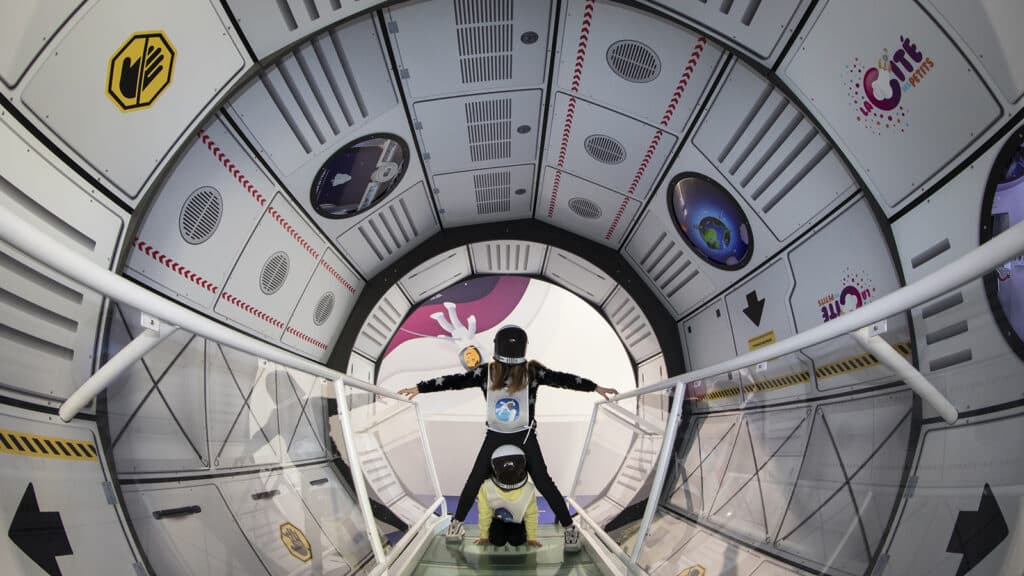Place your eye on the eyepiece of a telescope and take a live look at the surface of the Sun, the craters of the Moon or even some planets in broad daylight!
THE SUN AND THE MOON
Guided by a presenter, take turns looking through the instruments to observe the Sun magnified up to twenty times and view the astonishing activity of its surface:
- dark spots
- plasma eruptions
- granulation
Did you know that the Moon is often visible during the day? The telescope reveals its rugged reliefs, terminator, craters and seas by magnifying it a hundred times.


WITH A BIT OF LUCK: PLANETS AND STARS
If the weather and celestial mechanics are favourable, the telescope will reveal some planets:
- Venus, you can even try to spot it with the naked eye in broad daylight.
- Jupiter, its cloud bands, its Great Red Spot and its four main moons.
- Saturn and its rings.
- Mars with its ochre shades visible when it is closest to Earth.
Will you be up for our challenge? Locate some of the brightest stars in the blue sky in broad daylight, such as Vega, Deneb, Betelgeuse or Arcturus.
WHAT IF THE WEATHER IS UNFAVOURABLE?
The presenter demonstrates how the observatory operates and shows some of the finest images taken by the telescope. Don’t hesitate to ask any questions you may have about astronomy.
Be careful, never look at the Sun without proper protection. Our instruments are designed for observing the Sun safely.
Accessibility
- An articulated arm reflects the image at the desired height and facilitates observation through the telescope.
- A CCD camera device allows live observations to be projected onto a screen.














